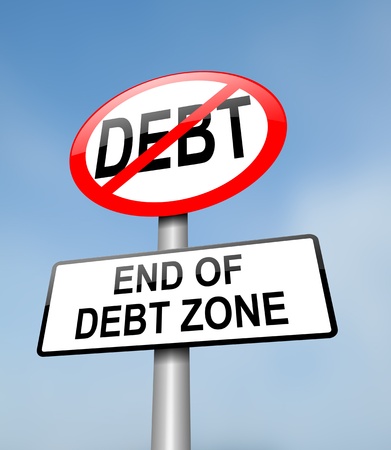Amy Miller, AFC®

Last year, we touched on how many Americans take on credit card debt during the holidays and how a large portion of them will have trouble paying for that debt. Since it’s now the third week in January and those statements will be arriving soon, I thought we would look at a few ways to pay down credit card debt.
Know your debt
Do you know – to the penny – what you owe in credit card debt? What are your current interest rates? Start by making a list outlining the balances, interest rates, minimum payments, and due dates. This is a good time to check out the disclosure box on your statement. This outlines all fees, costs, interest rates and terms that you as a customer could experience using this card.
Budgets, Budgets, Budgets
If you haven’t already done so, now is the time to have a budget and spending plan. Tracking your income against your expenses is the best first step to knowing what you can afford when paying down your debt. You really can’t be successful at knocking out debt without knowing what you have coming in and going out each month. A clear understanding of both will help you create a meaningful plan to pay down the debt(s).
Cutting Expenses
Once you have looked at your budget, it’s probably time to decide what you can do to lower your bills so that you can direct as many funds to attacking the debts as possible. There are many ways to go about this. Start by taking a hard look at what you are spending and what can go…..cable, takeout, expensive coffee, video games, mani/pedis? Ask yourself what is important to your financial future and what isn’t – then cut the fat! Trimming the unnecessary items can really add up and give you that extra needed to make headway on paying off your debts. And remember, they don’t have to be cut out forever – some short-term sacrifices can add long term financial stability.
Plan of attack
There are several debt reduction strategies out there – two of the most popular are the snowball method and the avalanche method. There are benefits to both, so it really comes down to which method you prefer, and which is best based on your specific situation.
Using the snowball method, you target the card with the smallest balance first by paying only the minimum on all other cards and applying every dime possible in your budget to this debt until it’s paid off. Then, you would move to the next smallest balance card – paying everything that had been applied to the previous card to this one in addition to the minimum payment you were already making on the card. You would continue this until all are paid to a zero balance.
The avalanche method instead focuses on the card with the highest interest rate or APR (annual percentage rate). The same rules apply to this one as the snowball method – pay all available funds to this account, then move to the next one and so on.
Both methods have been proven effective in paying down credit card debt. Supporters for the snowball method believe that working on the smallest balances first helps you build better habits for future financial health while others suggest the avalanche method is more financially advantageous since you are reducing the debt that produces the highest cost to your bottom line.
I have found that sometimes using a combination of these two methods works also. An example would be someone starts by paying the highest balances or interest rates first but then switches when one or more balances become low – like within a $100 – $200 range – which they could then pay off in one payment. Once those are taken care of, switch back to the original method.
More Income
After budgeting and cutting expenses, if there still isn’t enough to make good headway on your debt, sometimes we must face the reality of simply needing more income. Maybe it’s time to ask for a raise, look for a better paying job or take a part time job. Could you start a side hustle and make some money off a hobby? Maybe it’s time to clean out the closets and sell some old things you’ve been holding on to.
Other options
Some opt to lower their interest rates by transferring balances to lower rate or 0% cards and then paying as much to those as possible. This can work in your favor if done correctly but I suggest researching all fees associated – most charge a transfer fee and only offer the lower or 0% rate for a set amount of time.
Homeowners can tap into the equity in their home to consolidate their debts. I worked with many clients during my time as a lender that made this work in their favor. But, again, I highly encourage you to research options and terms since this route will tie your home to the debt because the lender will put a lien against the property, using it as collateral for the loan.
Finally……Automate
Once you have decided on your plan of attack, automate! Do the math so that you know exactly how much you will pay and for how long and then set it and (somewhat) forget it. Check in monthly for balances. Reset the automation when it’s time to move to the next card. I always suggest setting these up yourself verses having the financial institution set up the auto draft/payment from their end. Setting the payments up yourself puts you in control of when it starts and stops, what is paid, etc., which I always recommend (and prefer).
These are just a few ideas to attacking debt. My hope is that they help you start to get a handle on your debts and inspires you to take control so that debt isn’t allowed rule your life this year!